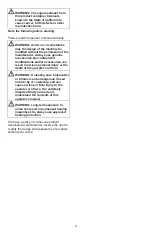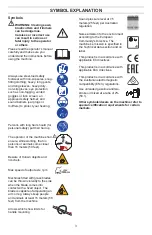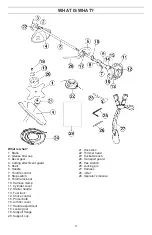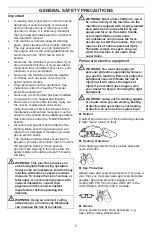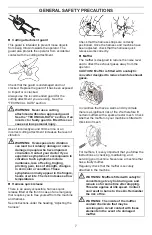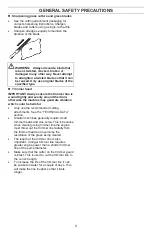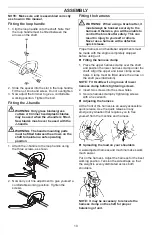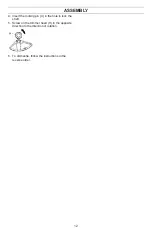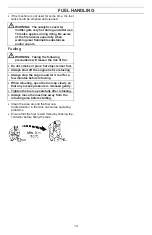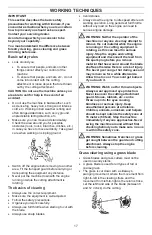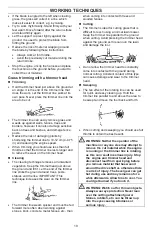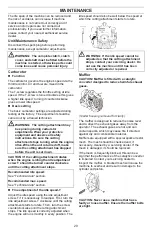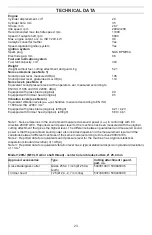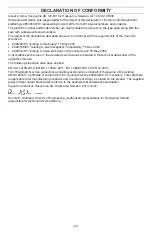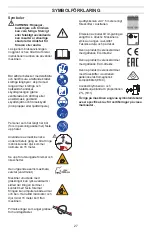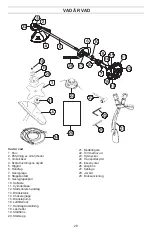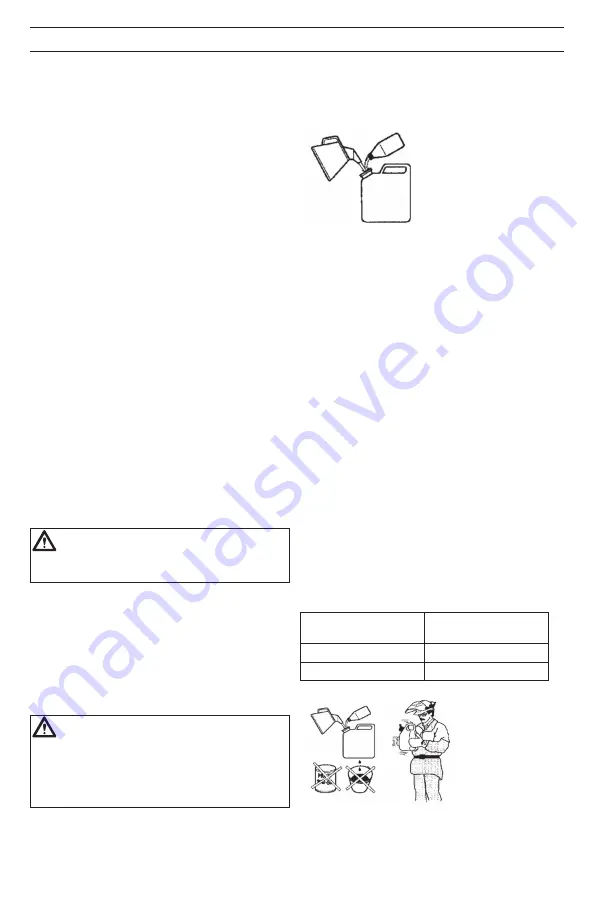
FUEL HANDLING
Fuel safety
Never start the machine:
•
If you have spilled fuel on it. Wipe off the
spillage and allow remaining fuel to evaporate.
•
If you have spilled fuel on yourself or your
clothes, change your clothes. Wash any part of
your body that has come in contact with fuel.
Use soap and water.
•
If the machine is leaking fuel. Check regularly for
leaks from the fuel cap and fuel lines.
Transport and storage
•
Store and transport the machine and fuel so that
there is no risk of any leakage or fumes coming
into contact with sparks or naked flames, for
example, from electrical machinery, electric
motors, electrical relays/switches or boilers.
•
When storing and transporting fuel always use
approved containers intended for this purpose.
•
When storing the machine for long periods the
fuel tank must be emptied. Contact your local
gasoline station to find out where to dispose of
excess fuel.
•
Ensure the machine is cleaned and that a
complete service is carried out before long-term
storage.
•
The transport guard must always be fitted to the
cutting attachment when the machine is being
transported or in storage.
•
In order to prevent unintentional starting of the
engine, the spark plug cap must always be
removed during long-term storage, if the
machine is not under close supervision and
when performing all service measures.
•
Secure the machine during transport.
WARNING: Take care when handling fuel.
Bear in mind the risk of fire, explosion
and inhaling fumes.
Fuel
CAUTION: The machine is equipped with a two-
stroke engine and must always be run using a
mixture of gasoline and two-stroke engine oil.
It is important to accurately measure the
amount of oil to be mixed to ensure that the
correct mixture is obtained. When mixing small
amounts of fuel, even small inaccuracies can
drastically affect the ratio of the mixture.
WARNING: Fuel and fuel fumes are
highly inflammable and can cause serious
injury when inhaled or allowed to come in
contact with the skin. For this reason
observe caution when handling fuel and
make sure there is adequate ventilation.
Gasoline
CAUTION: Always use a good quality
gasoline/oil mixture (at least 90 octane). Use
low-emission gasoline, also known as alkylate
gasoline, if it is available.
•
The lowest octane recommended is 90. If you
run the engine on a lower octane than 90, it can
result in knocking. This gives rise to a high
engine temperature, which can result in serious
engine damage.
•
When working at continuous high revs, a higher
octane rating is recommended.
Two-stroke oil
•
To ensure best performance and engine
durability, Husqvarna XP oil is preferred as it is
specially formulated for our air-cooled two
stroke-engines. Only use high quality full
synthetic two-stroke oil when mixing fuel.
•
Never use two-stroke oil intended for water-
cooled engines, sometimes referred to as
outboard oil or marine oil (rated TCW).
•
Never use oil intended for four-stroke engines.
Mixing
•
Mixture is 50:1.
•
Always mix the gasoline and oil in a clean
container intended for fuel.
•
Always start by filling half the amount of the
gasoline to be used. Then add the entire amount
of oil. Mix (shake) the fuel mixture. Add the
remaining amount of gasoline.
•
Mix (shake) the fuel mixture thoroughly before
filling the machine's fuel tank.
Gasoline, liter (gal)
Two-stroke oil, ml
(oz)
4 (1)
77 (2,6)
8 (2)
154 (5,2)
•
Do not mix more than one month's supply of fuel
at a time.
Summary of Contents for 129RJ
Page 266: ...KOKKUPANEK 6 Demonteerimine toimub vastaspidises järjekorras ...
Page 648: ...Trimmer Head Line Loading Instructions 20i 10i 3 m 6 m 1 2 3 4 5 6 7 8 9 ...
Page 649: ......
Page 650: ......
Page 651: ......
Page 652: ...2014 12 10 1156886 38 Rev B ...


